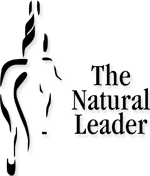
For two days I had been working hard at achieving the flow of the activity, but the goal of a soft feel and fluid motion remained elusive. As Jack and I continued to muddle around the arena, a voice came from outside fence “Would you mind if I made an observation?”
I had to stop and turn to where the voice came from as it was certainly not one I knew. “Please”, I responded as I was pretty sure any suggestion could improve on where we were at. With a single question, what had been painfully obvious to others was finally clear to me. The difference in outcome, nothing short of remarkable.
I was riding in a clinic with horsemanship master Buck Brannaman, but it was my ringside consultant who opened up the greatest possibilities for me that weekend. As horsemanship is all about our own behaviours, it was Chris’ simple suggestion that had helped me to adjust mine. The Zen saying: “When the student is ready, the teacher will appear.” fits as that one observation has lead to an ongoing dialogue with a friend willing to share his experience and wisdom.
While it may simply be a case of semantics, a term or a title can be everything. I was beginning to believe I was uncoachable however, being mentored is totally appealing. Founded in Greek Mythology, even the word mentor conjures up an image of admiration. Off to fight a two decade long war, Odysseus left his son Telemachus in the charge of faithful friend Mentor, to raise his son to be an honourable, truthful and courageous man.
Corey Olynik captures that appeal in his book “The Mentor’s Mentor”. The first chapter One Conversation Many Installments introduces the concept beautifully. Olynik’s view is the Mentor plays many roles through that Conversation. A role that begins as a Confidante and listens without judgement; is a Role Model with the experience to share, a Guide to help a protege see things for herself, a Tutor to facilitate learning, a Coach to bring accountability to the relationship and ultimately the overarching role of a Sage who keeps his eye on the vision.
Since that day last summer our conversations have covered many topics family, death, politics, the environment, the weather with a thread that always returns to horsemanship. Chris has some wonderful experience to share and his suggestions have greatly enhanced my learning and progress, he has asked the tough questions that make me think about my next step and overall he understands the ultimate goal we both seek in our relationship with our horse.
I have found yet one more Mentor to my horsemanship and leadership journey. Chris, it has been an unexpected and fun conversation, with what I hope to be many installments yet to come. Thank you.




